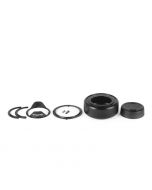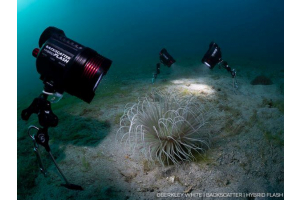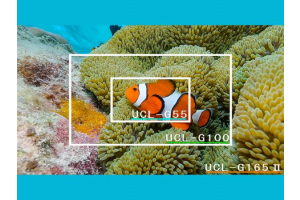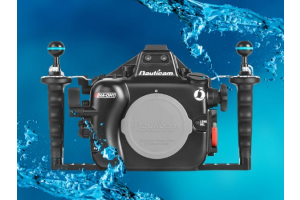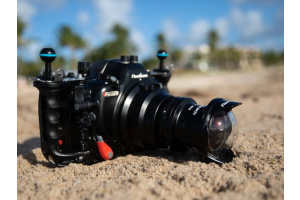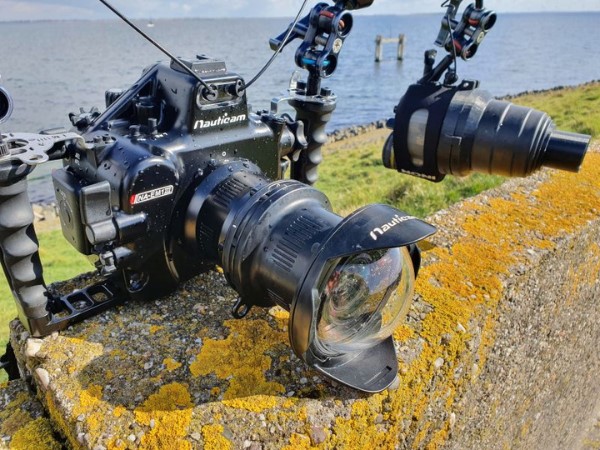
We have tested the Nauticam MWL-1 lens: it is a really unique lens! The conclusion is that it's fantastic to switch between macro and 150-degree ultra-wide angle. Unsure of what to expect in terms of visibility and subjects during your dive? Or simply can't decide and want to capture everything? Then the Nauticam MWL-1 is a definite recommendation.
Macro or wide-angle?
You have mounted your macro lens on your camera because you are diving at a real macro spot. But then suddenly, a whale shark swims by... The only thing you can take a photo of would be the eye of this immense creature. Sounds familiar? With the Nauticam MWL-1 Macro to Wideangle lens, you no longer have this problem: with just a twist, you can change your camera from macro to wide-angle! How does it work? Marco Heesbeen explains.
Before every dive, I wonder again which lens I should take with me. What can I expect at this dive site today? How will the visibility be? Many divers with a camera ask themselves this question every time. This is especially true for diving in our local waters because visibility there can vary greatly. If the visibility is very poor, I prefer a macro lens, but if the visibility is very good, I definitely want to take advantage of it and I'm eager to work with a wide-angle lens. With DSLR and mirrorless cameras, this means changing the lens on the camera and attaching the corresponding dome or flat port.
Nauticam MWL-1: Macro to Wide angle lens
The Nauticam MWL-1, Macro to Wide angle Lens, is a revolutionary concept and provides the solution to this decision stress. This wet lens can be placed and removed underwater, transforming a 60mm macro lens (full frame equivalent) into an ultra wide-angle lens with an enormous field of view of up to 150 degrees. With the Nauticam MWL-1, you can focus from infinity to 0cm... right up to the lens glass itself. This offers an unique perspective where you can impressively capture small macro subjects while still retaining some background visibility!
The MWL-1 is the result of years of development and is a complex system of high-quality optical elements. These elements are made of special optical glass and feature anti-reflective coatings to prevent glare and reflections. The robust aluminum body ensures that the lens can be used up to 100 meters depth. The lens weighs 1.20kg (0.58kg underwater) and with a diameter of 10cm and length of 12cm, it is still reasonably compact.
The lens comes in a beautiful protective case with sturdy custom foam inside to protect the lens during transport. A protective cap for the rear and a neoprene cover for the front are also included as standard.
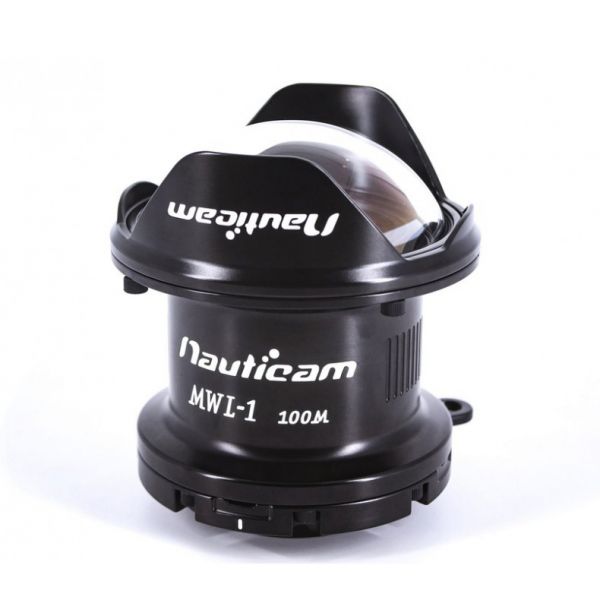
Placing and Storing the MWL-1
To fully utilize the great value of this lens, it is important that you can easily and quickly place, remove, and store the lens during your dive. The Nauticam MWL-1 comes with a bayonet mount. This makes changing the lens easy... even with thick gloves. Most flat ports have 67mm threads. The special M67 to bayonet Mount Converter for the port is also included with the lens as standard. So you can get started right away. If you also want to use a macro diopter lens (such as the Nauticam CMC), there is an optional adapter to provide the macro lens with a bayonet mount as well, so you can quickly and easily attach it to the port. If you're not using the lens, you want to be able to store it safely. For this, you can attach a single or double lens holder to an arm. Even easier is the use of a flip adapter. Nauticam has developed a flip holder especially for the MWL-1, tailored to the size and weight of the MWL-1. There is even a double version so you can attach both the MWL-1 and a macro diopter lens.
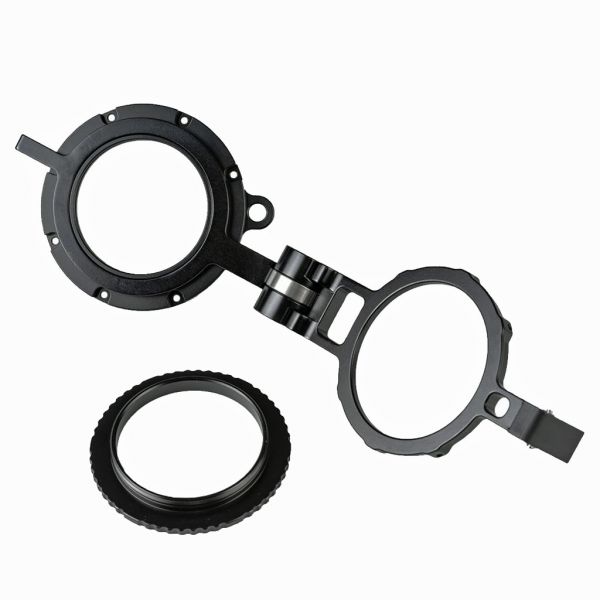
In Practice
For the Micro Four Thirds system (Olympus OM-D, Panasonic), there are 3 lenses to choose from for use in combination with the Nauticam MWL-1: the Olympus M.Zuiko Digital ED 30mm f3.5 Macro, the Panasonic Lumix G Macro 30mm f/2.8 Asph. Mega O.I.S., and the Olympus M.ZUIKO DIGITAL ED 12-50mm f/3.5-6.3 EZ. The MWL-1 is designed for use with a 60mm macro lens (full frame equivalent), and due to the 2x crop factor of the Micro Four Thirds system, this corresponds to a 30mm lens. I opt for the 30mm from Olympus.
The 30mm lens is not compatible with a macro diopter lens, so I only take the Nauticam MWL-1 with me. The 30mm is a short lens and with the corresponding port, my setup remains compact. The Nauticam MWL-1 is quite a large lens. I find it rather large to attach it to a lens holder on an arm, so I adjust an adapter and attach a lens holder on top of my underwater housing accessory shoe. That works fine for me.
The weather forecast is good and we decide to drive to Dreischor (Zeeland, The Netherlands) in the hope of being able to take a beautiful wide-angle shot. Upon arrival, it looks beautiful... until we cross the dike. It turns out there is quite a wind blowing, right onto the dike, causing quite some choppy waves. Underwater, it also has quite an impact on visibility. Up to about 7 meters, the visibility is poor. Below that, it is remarkably good. Once again, a confirmation that visibility in our waters cannot be predicted. Very nice that I am now not limited to taking wide-angle shots, but can also just work with macro!
The weight of the Nauticam MWL-1 lens is quite manageable underwater. The bayonet mount works excellently, and even with drysuit gloves and thick undergloves on, I can easily change the lens. The water temperature is 4 degrees and there is not much life yet. You normally find most subjects here in the shallow waters, but that is not an option now due to the visibility. In the absence of subjects, I take some photos of my buddy. I use different apertures because I am particularly interested in edge sharpness. Rectilinear wide-angle lenses (not fisheye lenses) behind a dome port always suffer from corner softness, especially at larger apertures. I come across a sea urchin, the usual mussels, and plenty of eggs from a goby. So, there are macro subjects after all. But right now, I'm more interested in wide-angle. Eventually, I take some photos of a Sea Anemone with the MWL-1. I am almost up against the anemone, and the lens indeed focuses effortlessly. It gives a nice effect. The anemone appears much larger in the photo than in reality, and there is still a nice amount of background visible. Near the exit, I quickly take some photos of the colorful red seaweed. The abundance of suspended particles in the water makes the sun rays beautifully visible, and without using flashes, you still get a decent picture.
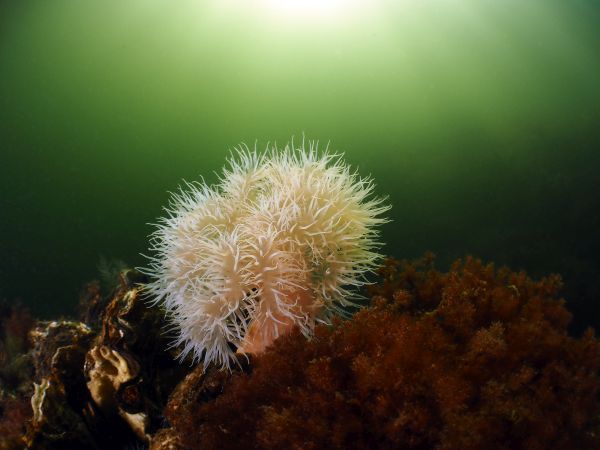
Back home, I review the photos and am satisfied with the performance of this lens. The edge sharpness is neat. At a wide aperture (f/5.6), you can see the sharpness in the corners decrease slightly, but the result is certainly sharper than with a regular wide-angle lens with a dome port, such as the Olympus 9-18, for example. The photos taken at smaller apertures (f/10 and smaller) are very sharp. I have been using the Nauticam WWL-1 wide-angle converter for some time now, and it performs even better in the corners than the MWL-1, but it cannot be combined with a macro lens and has a "mere" field of view of 130 degrees.
Conclusion
The Nauticam MWL-1 is truly a unique lens. The ability to switch effortlessly between macro and 150-degree ultra-wide-angle is fantastic. The MWL-1 is a substantial lens, so a good mounting option is important to fully take advantage of the flexibility this lens offers. The optical quality is excellent, and the edge sharpness is even better than the average wide-angle lens with a dome port but slightly less sharp than the Nauticam WWL-1 or EMWL lens. If you're unsure what to expect in terms of visibility and subjects during your dive, or if you simply can't decide and want to capture everything, then the Nauticam MWL-1 is a definite recommendation.

 Nederlands
Nederlands
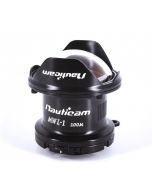
![Nauticam Double Flip Holder for MWL-1 [86222]](https://www.uwcamerastore.com/media/catalog/product/cache/0b941459c774b4a08f46ada992af2dc6/n/a/na86222-1.jpg)
![Nauticam M67 Flip holder for MWL-1 [86221]](https://www.uwcamerastore.com/media/catalog/product/cache/0b941459c774b4a08f46ada992af2dc6/n/a/na86221-1.jpg)
![Nauticam Neoprene Cover for MWL-1 [86234]](https://www.uwcamerastore.com/media/catalog/product/cache/0b941459c774b4a08f46ada992af2dc6/8/6/86234_1024x1024.jpg)
![Nauticam Hard Cap for MWL-1 [86235]](https://www.uwcamerastore.com/media/catalog/product/cache/0b941459c774b4a08f46ada992af2dc6/8/6/86235hardcapformwl-1_1024x1024.jpg)

